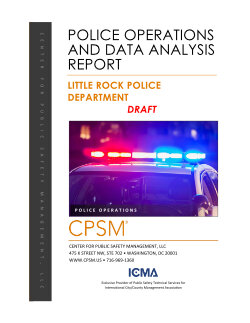Gary Cordner, Elizabeth Biebel
Problem-oriented policing was first introduced in an article by Herman Goldstein in 1979. It was formally field-tested in the 1980s in Baltimore County (Cordner, 1986) and Newport News (Eck and Spelman, 1987), given a wider audience through an Atlantic Monthly magazine article in 1989 (Wilson and Kelling), and systematically described and explained in Goldstein's 1990 book. Today, it is widely regarded as the most analytical and intellectually challenging strategy in the police arsenal.
Questions linger, however, about the implementation and practicality of problemoriented policing (POP). The SARA process (scanning, analysis, response, assessment) for carrying out POP is analytically and creatively demanding, as well as time-consuming. Some observers question whether police have the knowledge and skill to implement the SARA process properly. Police officers often question whether they have the time to do so.
The research reported here carefully examined problem-oriented policing in practice by ordinary police officers in one agency - the San Diego, California Police Department. The objective was to discover and describe the reality of everyday, streetlevel POP as practiced by generalist patrol officers. San Diego was chosen because of its reputation as a national leader in problem-oriented policing.
U.S. Department of Justice.. 2003. 28p.
















